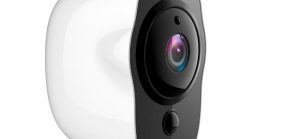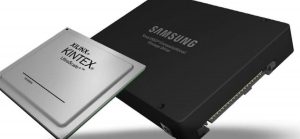From smart telescopes to computational storage, digital health to endpoint AI, CES 2021 had it all—proving that an all-digital show needn’t get in the way of showcasing technological innovation.
Arm Blueprint staff
CES 2021 may be an all-digital affair this year, but its status as the world’s biggest annual consumer electronics show remains unchallenged. With a clear emphasis on 5G, AI and—bolstered by the ongoing pandemic—digital health, CES 2021 has once again proved a launchpad for innovation, not only for retail-ready consumer devices but for technologies which will enable new devices in the future.
We’ve been on the lookout for those devices and technologies, Arm-based or otherwise, that represent the best of what CES 2021 has to offer. Here’s our list…
Lenovo ThinkReality A3
We’ve been talking about the growing role of AR smart glasses within the enterprise for a while, but the distributed workforce of the ‘new normal’ has accelerated interest across the board. Lenovo’s lightweight ThinkReality A3 AR glasses can be used to create a virtual workspace anywhere, from virtual monitors at home to guided schematics on the factory floor.
Powered by the Qualcomm Snapdragon XR1 platform, the ThinkReality A3 AR glasses can generate up to five virtual displays and can also tether to a PC. Available from mid-2021, Lenovo hasn’t announced consumer pricing as it’s targeting enterprise environments, such as factories, laboratories, retail locations and hospitality spaces.
Vaonis Vespera
 The Vaonis Vespera smart telescope is a follow up to the Vaonis Stellina launched in 2018. That device sought to revolutionize astronomy through a bespoke digital telescope system powered by an Arm CPU, working with a smartphone or tablet to guide users around the cosmos and help them record images of the stars and constellations they found.
The Vaonis Vespera smart telescope is a follow up to the Vaonis Stellina launched in 2018. That device sought to revolutionize astronomy through a bespoke digital telescope system powered by an Arm CPU, working with a smartphone or tablet to guide users around the cosmos and help them record images of the stars and constellations they found.
At $3,999, though, this automated astronomy device was quite the investment—and hardened traditionalists were quick to point out just how much manual telescope gear you could get at that price point. The Vespera, launched at CES 2021, comes in at $1,499: and while its focal length and image sensor resolution is only half that of the Stellina, it’s a more affordable way to learn about the sky above.
Binah.ai
 While telehealth has surged due to the pandemic, remote patient monitoring has proved a challenge: one that binah.ai attempts to solve.
While telehealth has surged due to the pandemic, remote patient monitoring has proved a challenge: one that binah.ai attempts to solve.
The binah.ai app employs AI and signal processing technologies to calculate medical-grade vital sign measurements—including heart rate, oxygen saturation, temperature and respiration rate—in real time using only a smartphone’s camera. Using remote photoplethysmographic imaging (rPPG), the app measures changes in red, green and blue light reflected from the skin to generate an overall picture of health.
While we can’t vouch for their claim of 95 to 98 percent accuracy against medical-grade equipment, it’s an impressive example of the advanced capabilities of today’s smartphone hardware and software.
Mercedes-Benz MBUX Hyperscreen
 The stunning 56-inch wide MBUX Hyperscreen automotive cockpit makes use of eight CPU cores and 24 gigabytes of RAM to deliver an all-digital dashboard for both the driver and front passenger.
The stunning 56-inch wide MBUX Hyperscreen automotive cockpit makes use of eight CPU cores and 24 gigabytes of RAM to deliver an all-digital dashboard for both the driver and front passenger.
It’s smart, too—the ability of the Hyperscreen to learn and adapt using artificial intelligence (AI) means the display and operating system (OS) can make personalized suggestions for infotainment, comfort and vehicle functions depending on the driver and situation.
The MBUX Hyperscreen will make its first appearance in Mercedes’ all-electric EQS expected to be revealed later this year.
AltumView Sentinare 2
 Another CES 2021 Innovation Awards Honoree, AltumView’s Sentinare 2 smart activity sensor is an AI-powered video sensor aimed at monitoring and analyzing the activities of elderly citizens, enabling them to keep living as independently as possible.
Another CES 2021 Innovation Awards Honoree, AltumView’s Sentinare 2 smart activity sensor is an AI-powered video sensor aimed at monitoring and analyzing the activities of elderly citizens, enabling them to keep living as independently as possible.
It’s capable of detecting a fall, learning a person’s routine and even sensing their mood in order to create a personalized profile and alert caregivers to any changes. As well as giving elderly citizens much-needed privacy, it also enables caregivers to maintain distance in the wake of the COVID-19 pandemic.
Powered by an Arm processor, the Sentinare 2 is a secure product that protects user identity by only transferring stick-figure images off the device.
Samsung SmartSSD CSD 4TB
This new computational storage drive from Samsung was announced in November but received honoree status in the CES 2021 Innovation Awards for being the industry’s first adaptable computational storage platform.
While conventional storage devices already contain a CPU to control storage functions, computational storage adds the ability to process non-storage workloads—such as the processing of data directly on the storage device.
The Samsung SmartSSD CSD 4TB employs an Arm-based Xilinx Zynq FPGA to perform its own data processing, freeing the server main memory for other tasks.
Syntiant NDP120
 A CES 2021 Innovation Awards Honoree, the Syntiant NDP120 is an endpoint AI chip that features a highly flexible, ultra-low-power deep neural network inference engine. With a low-power Arm microcontroller at its core, the NDP120 is designed to be built into always-on applications in battery powered devices, enabling low-power endpoint AI processing in all types of consumer tech products, from smartphones to smart speakers, earbuds to security devices.
A CES 2021 Innovation Awards Honoree, the Syntiant NDP120 is an endpoint AI chip that features a highly flexible, ultra-low-power deep neural network inference engine. With a low-power Arm microcontroller at its core, the NDP120 is designed to be built into always-on applications in battery powered devices, enabling low-power endpoint AI processing in all types of consumer tech products, from smartphones to smart speakers, earbuds to security devices.
While it’s perhaps a little further up the supply chain than most products at CES, the Syntiant NDP120 is already finding its way into consumer devices such as clinical-quality biometric wearables, serving as an example of the kind of endpoint AI innovation set to usher in a new wave of intelligent, low-power consumer devices.










